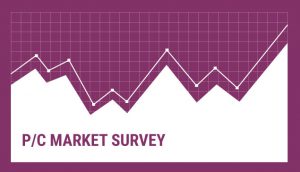The Council welcomes 14 new member firms and five new sponsors.

The Council Foundation announced today that it is awarding $375,000 in academic scholarships to 75 college students interested in pursuing careers in insurance brokerage.

Commercial property/casualty (P/C) rates continued to decline for the tenth straight quarter, according The Council of Insurance Agents & Brokers’ Commercial P/C Market Survey.
Jenn Walsh, senior vice president and partner at Woodruff-Sawyer & Co. in San Francisco has been named chair of the Council of Employee Benefits Executives (CEBE) Advisory Board.
The Council announced today the addition of two new member firms and four new Partners in Excellence sponsors.

When it comes to purchasing cyber insurance, clients are beginning to ask the right questions as they become more familiar with the risk.

Commercial property/casualty (P/C) rates remained competitive in Q1 2017, with the average rate decline across all accounts at 2.5 percent.
The Council of Insurance Agents & Brokers announced today the addition of six new member firms.

Commercial property/casualty (P/C) rates declined in Q4 across small, medium and large accounts for the eighth straight quarter, according to The Council of Agents & Brokers’ Commercial P/C Market Survey.
The Council of Insurance Agents & Brokers applauded yesterday’s defeat of Colorado ballot initiative Amendment 69. With 86 percent of precincts reporting, the amendment was headed toward sound defeat, 79.6 percent to 20.4 percent. The measure, also known as “ColoradoCare,” threatened to completely dissolve employer-provided health benefits and private workers compensation policies in the State of Colorado by creating a state-operated single-payer health regime. It would also have eroded the market for workers’ compensation policies.


